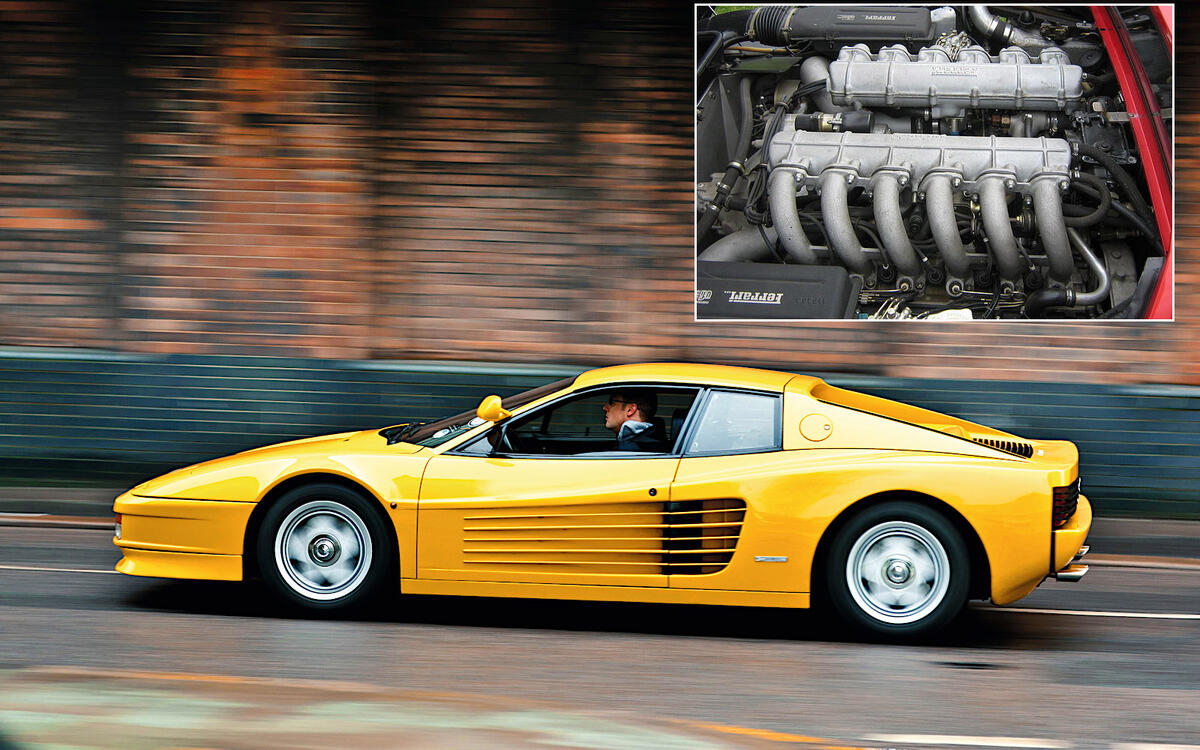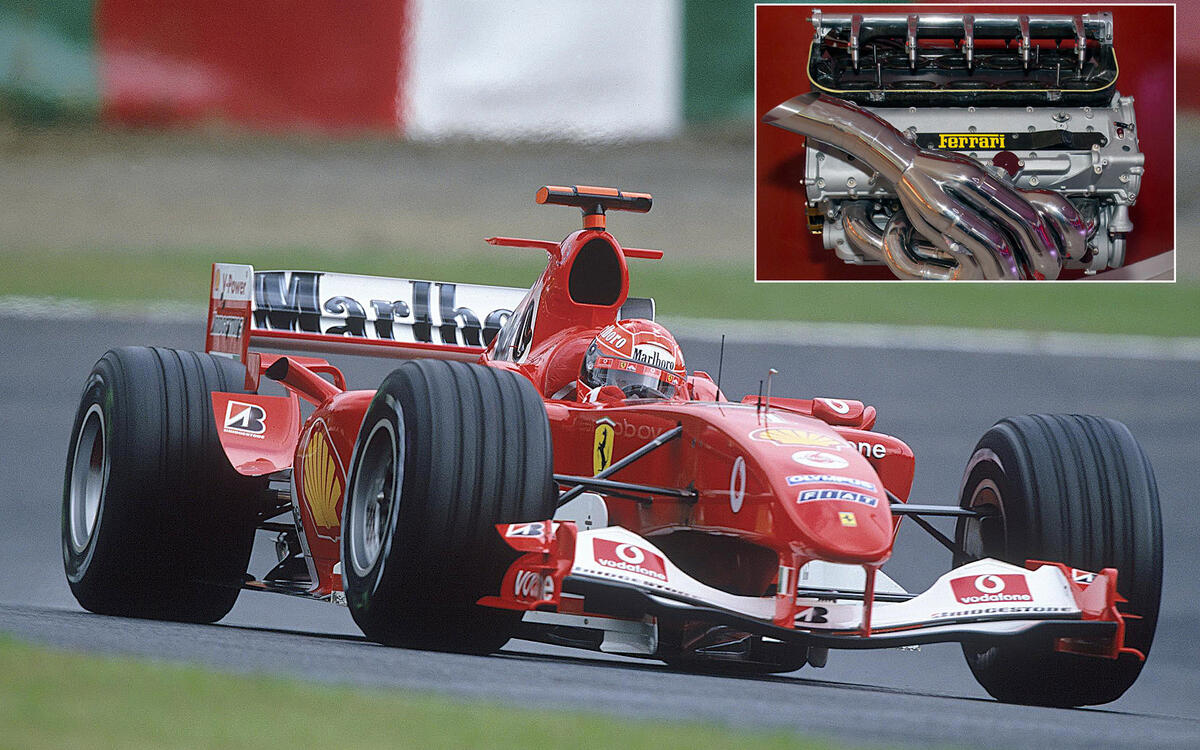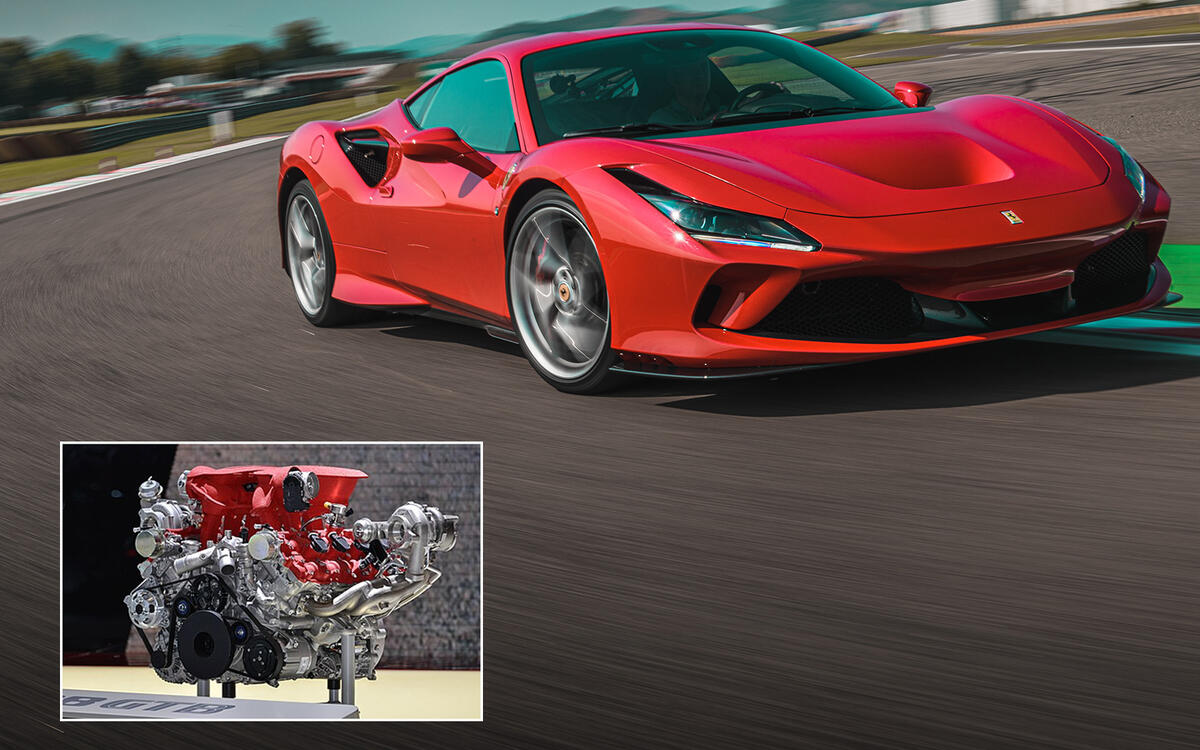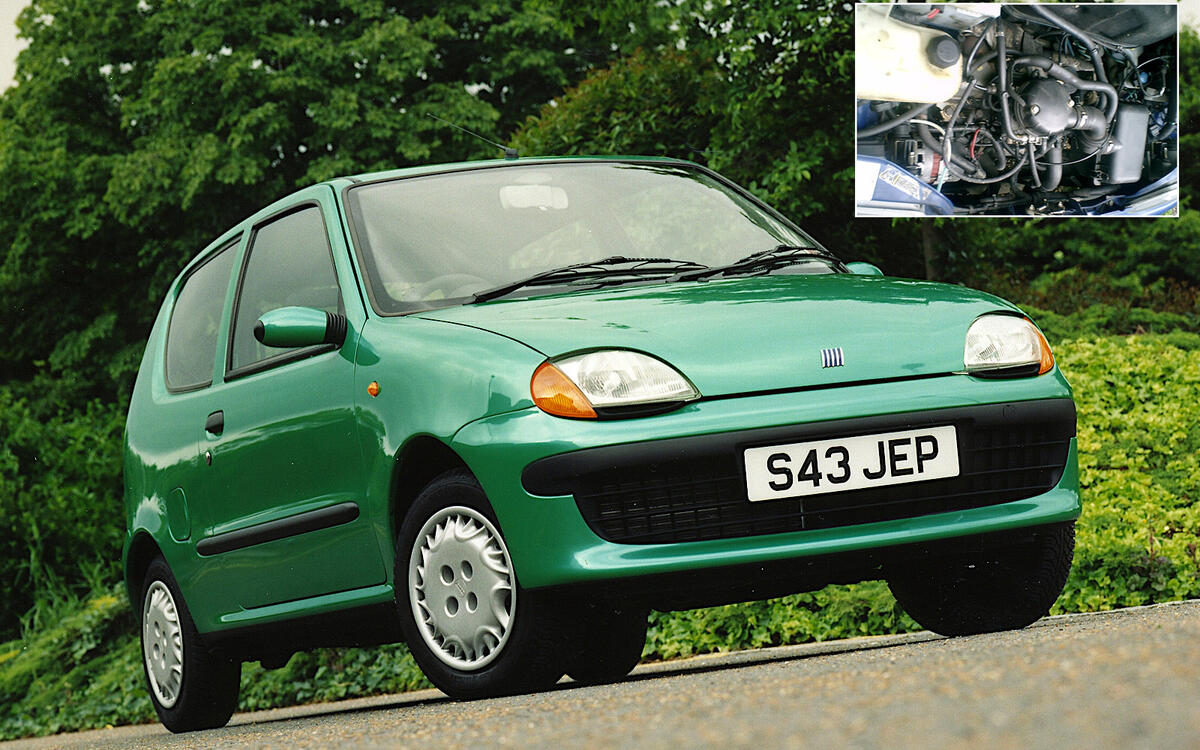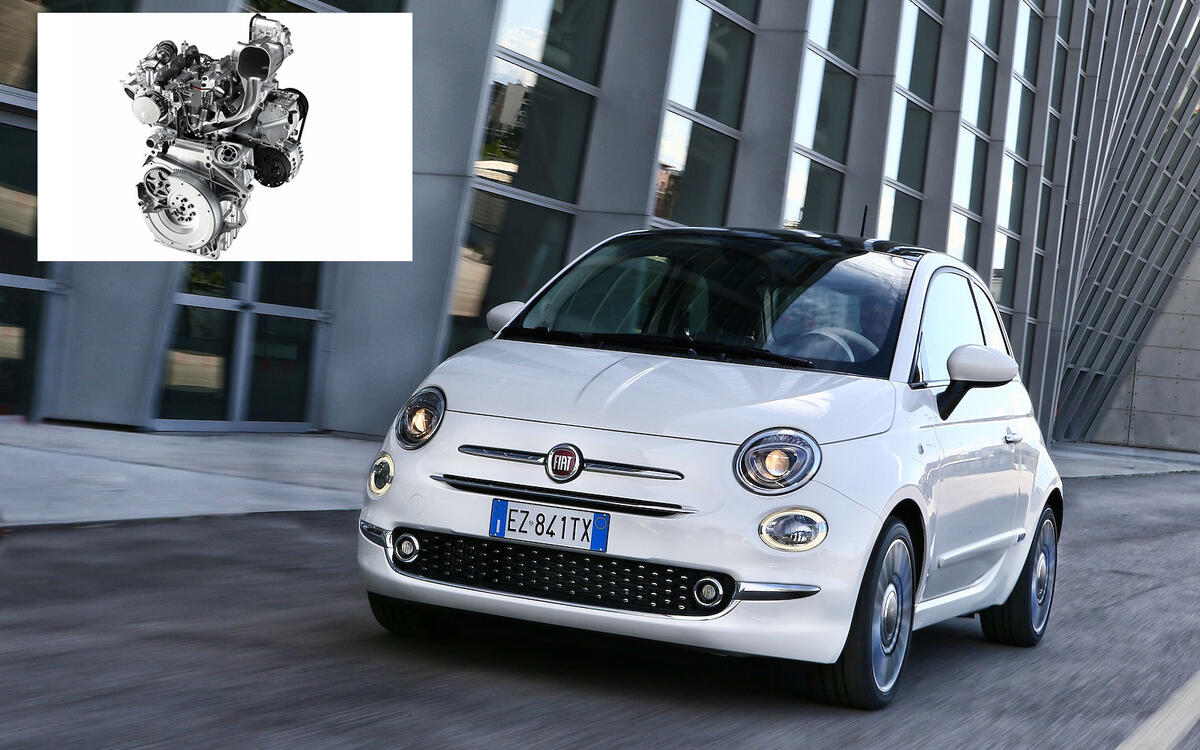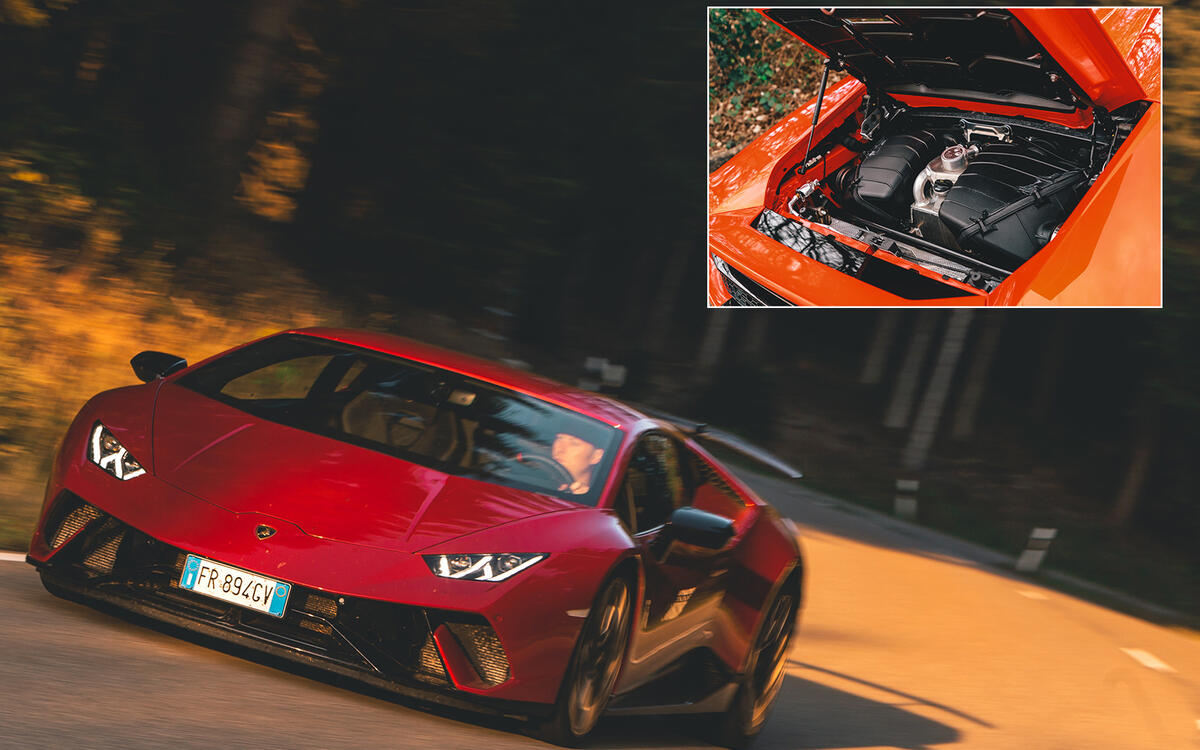 Slide of
Slide of
Italians are rightly proud of the car engines their nation has produced.
The variety is astonishing. On the one hand, there are fantastically powerful motors designed for sports and competition cars. On the other, there are humdrum but effective little units producing no more power than the car absolutely needs.
Either way, Italian engines almost always have flair, and are very often technically advanced. Here are 20 of our favourites:
 Slide of
Slide of
Alfa Romeo 8C
The straight-eight engine designed by Vittorio Jano (1891-1965) for the 1931 Alfa Romeo 8C was essentially two inline fours mounted one behind the other on a common crankcase. It powered the winning cars in every Le Mans 24 Hour race from 1931 to 1934, and was also used in several high-performance road-going sports cars.
A developed version was successful in Grand Prix racing until the wealthier Auto Union and Mercedes teams came along. Alfa tried to respond to the threat by fitting two engines in the same car in 1935, but it didn't work.
 Slide of
Slide of
Alfa Romeo Twin Cam
The all-alloy double overhead camshaft engine designed by Giuseppe Busso (1913-2006) made its debut in the 1954 Alfa Romeo Giulietta. In this application, it had a capacity of 1290cc, which was the lowest used for a production car. A 1962cc version was fitted to the 2000 GTV in 1971.
Eight-valve versions of the later Alfa Twin Spark engine were derived from the Twin Cam.
 Slide of
Slide of
Ferrari Colombo V12
The very first car to wear a Ferrari badge - the 125 S sports racer of 1947 - was powered by a 1.5-litre V12 engine created by Gioacchino Colombo (1903-1988). The engine was developed greatly in the following decades, eventually reaching a capacity of 4.9 litres. It was last used in the 412i, which was discontinued in the year of Colombo's death.
During its long career, the Colombo V12 was fitted to a great many Ferrari sports cars, including the celebrated 250 series and the 365 GTB/4 Daytona (pictured).
 Slide of
Slide of
Ferrari Lampredi V12
Only three years after the introduction of the Colombo engine, Enzo Ferrari (1898-1988) commissioned Aurelio Lampredi (1917-1989) to design another V12. This one was larger, measuring between 3.3 and 4.9 litres. Often used for Grand Prix racers, it also powered one version of the 250, along with the 340 sports car (pictured).
Unlike the Colombo, the Lampredi V12 was in production only during the 1950s, but it remains one of the most celebrated Ferrari engines.
 Slide of
Slide of
Ferrari Flat-12
In 1970, Ferrari created a flat-12 engine, with six cylinders extending horizontally from each side of the crankcase, for its Formula 1 cars. This layout, which provides a very low centre of gravity, was then used for another engine designed for the 1973 Berlinetta Boxer, Ferrari's first mid-engined 12-cylinder road car.
The flat-12 started out at 4.4 litres and grew to 4.9 litres. It was used for all versions of the Testarossa (pictured), latterly in quad-camshaft form, and remained in production until 1996.
 Slide of
Slide of
Ferrari V10 F1
No Ferrari road car has ever used a V10 engine, with the marque only ever building them for the purposes of competing in Formula 1. There were three basic designs. The third, with a 90-degree angle between the two cylinder banks, was by far the most successful.
It powered the cars with which Michael Schumacher (born 1969) won the F1 Drivers' Championship in 2000, 2001, 2002, 2003 and 2004. The 2005 season was, relatively speaking, a disaster, but that wasn't the engine's fault.
 Slide of
Slide of
Ferrari F136
The F136 scored eight category wins in the International Engine of the Year awards from 2011 to 2015. Available in sizes ranging from 4.0 to 4.7 litres, the V8 was fitted to Ferrari's own F430, 458 (pictured) and California models, as well as the Alfa Romeo 8C and nearly two decades' worth of Maseratis.
The F136 was also the only permitted engine in the final two years of the A1 GP race series in 2008 and 2009.
 Slide of
Slide of
Ferrari F140
Like the smaller F136, the Ferrari F140 V12 engine has been a regular winner in the International Engine of the Year awards. It has been produced since 2002 with capacities of between 6.0 and 6.5 litres. Despite its size, it is capable of revving to 9500rpm - far higher than most road-going cars.
The engine made its debut in the Ferrari Enzo (pictured) and is now fitted to the 812 Superfast. In its most powerful form, it produces well over 800bhp.
 Slide of
Slide of
Ferrari F154
The twin-turbocharged, direct-injection F154 V8 replaced the naturally-aspirated F136 in Ferrari and Maserati models in 2013. It went on to win the overall International Engine of the Year award every year from 2016 and 2019, and was voted number one in the New Engine, Best Performance Engine and 3.0 to 4.0 Litre categories.
Without assistance, the F154 produces up to 710bhp as fitted to the Ferrari F8 Tributo (pictured). It also contributes to the 986bhp total output of the SF90 hybrid sports car.
 Slide of
Slide of
Fiat S76
In the early days of motoring, the best way to achieve more power was to build a bigger engine. Fiat took this to extremes when it created a 28.4-litre four-cylinder motor for the 1910 S76, which was designed to beat the Land Speed Record then held by the 21.5-litre Blitzen Benz.
Unlike the Benz, the Fiat could exceed 130mph, but it never officially held the record. A reconstructed S76 has competed in British races and hillclimbs in recent years.
 Slide of
Slide of
Fiat 100 Series
Like the S76, the Fiat's 100 Series engine had four cylinders, but only about one thirtieth of the capacity. It made its debut in 633cc form in the 1955 Fiat 600, and later provided just about enough power for legions of small Italian cars, eventually reaching 1050cc as fitted to the Autobianchi A112 Abarth.
The 100 Series was last used in the Fiat Seicento (pictured) at the turn of the century. It was never a dramatic engine, but it played an enormously important role in the Italian motor industry, with production numbers in the millions.
 Slide of
Slide of
Fiat 500
The air-cooled two-cylinder engine fitted to the Fiat Nuova 500 was considered noisy and underpowered almost from the moment the car went on sale in 1957. Despite that, it has greatness of a sort, because it helped make the 500 so cheap to buy and run that it was affordable to almost any post-WW2 Italian with a job.
The 500 is perhaps the most significant car Italy ever produced, and the engine is part of the reason why.
 Slide of
Slide of
Fiat Twin Cam
Unrelated to the Alfa Romeo Twin Cam mentioned earlier, the Fiat Twin Cam was designed by Aurelio Lampredi, who we have already met in the context of V12 Ferraris. His engine was first used in the Fiat 124 - and derivatives such as the Abarth Rally (pictured) - and later appeared in many other Fiat, Alfa, FSO and Lancia models.
In the 1980s, it was even the standard engine for the otherwise very much un-Italian Morgan Plus 4.
 Slide of
Slide of
Fiat TwinAir
Among 21st century engines, the TwinAir is extremely unusual in having only two cylinders. It is also one of the smallest currently available, with a capacity of just 875cc. It made its debut in the Fiat 500 in 2011, and won the overall International Engine of the Year award in the same year.
The TwinAir was the first engine designed specifically to use Fiat's MultiAir variable valve timing and lift technology, which had previously made its debut on a converted four-cylinder engine. The same technology was licensed to the Schaeffler Group, which in turn licensed it to Jaguar Land Rover for use in the Ingenium engines.
 Slide of
Slide of
Lamborghini V12 (first generation)
Like Ferrari, Lamborghini put a V12 engine into its first car. The 350GT of 1964 was fitted with a 3.5-litre engine detuned - by a team led by Gian Paolo Dallara (born 1936, inset picture on the right) - from a very racy prototype created by Giotto Bizzarrini (born 1926, left – Ferruccio Lamborghini is in the centre).
Lamborghini continued to develop and use the engine for many years. Sources disagree on whether or not the V12 in the Diablo, introduced in 1990, was a new engine or simply a development of the original. At the very least, it had some features in common with the 1960s version.
 Slide of
Slide of
Lamborghini V12 (second generation)
The V12 which made its debut in the 2011 Aventador (pictured) was unquestionably new. Always measuring 6.5 litres, it has never been offered with a maximum power output of less than 690bhp.
In its most extreme form, as found in the limited-edition, track-only Essenza SCV12 hypercar, it produces 819bhp without the benefit of turbocharging or supercharging.
 Slide of
Slide of
Lamborghini V10
The 'junior' engine in Lamborghini's sports car range is a naturally-aspirated V10 which made its debut in the 2003 Gallardo (pictured). Initially measuring 5.0 litres, but later expanded to 5.2 litres, it is now found in the Huracán, which replaced the Gallardo in 2014.
Its highest power output to date is 632bhp, or approximately 122bhp per litre, which is close to the Essenza SCV12's 126bhp per litre.
 Slide of
Slide of
Lancia V4
For over half a century, Lancia produced many narrow-angle V4 engines. This incredibly compact layout allows all four cylinders to operate within a tiny volume, with resulting benefits in strength, packaging and weight distribution.
Lancia's last V4 appeared in the 1963 Fulvia. A special version was created for the Fulvia Coupe HF. This car dominated the 1972 International Championship for Manufacturers, the immediate predecessor of the World Rally Championship.
 Slide of
Slide of
Maserati 250F
The best-known of the straight-six engines produced by Maserati in the 1950s was the 2.5-litre unit fitted to the 250F. Similar in principle to the smaller engines used in the Maserati’s A6 road and racing cars, the 2.5 powered one of the most successful Grand Prix cars of its day.
The 250F could be (and was) used by several independent teams and drivers, but it was also quick enough for Juan Manuel Fangio (1911-1995) to win the 1957 F1 World Championship. Maserati occasionally fitted a V12 engine to the car, but found that it had no noticeable advantage over the straight-six.
 Slide of
Slide of
Maserati Tipo 107
The first-generation Maserati Quattroporte (pictured) featured a new 4.1-litre V8 engine with twin overhead camshafts per cylinder bank, making four in all. It became one of the company's longest-lived road-going engines. After its debut in 1963, it was used for many more models including the Bora, Indy and Kyalami, in capacities of up to 4.9 litres.
The last car to use the engine was the third-generation Quattroporte, which remained in production until 1990.
A celebration of the finest engines from the home of Ferrari, Fiat, Lamborghini and many others
Advertisement






